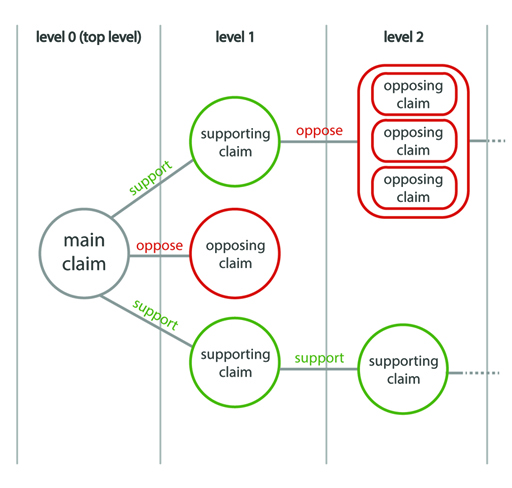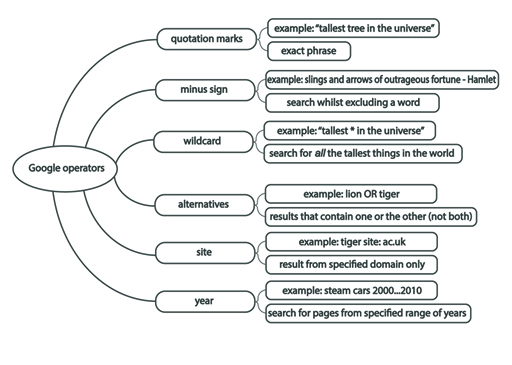3.1 Mind and argument maps
FreeMind was originally designed for the creation of mind maps. A mind map, just like an argument map, is a diagram that consists of nodes and connections between these nodes.
In argument maps (see Figure 6, which you will recognise from Session 4), there is a hierarchy of nodes: It starts at level 0 with a central, top or root node, which represents the main claim. This node is connected to nodes at level 1, which in turn are connected to nodes at level 2, and so on.

Mind maps have the same hierarchy of levels. As a result, FreeMind can also be used for argument mapping.
Although mind and arguments maps have similar structures, there are differences in how these structures are used. In an argument map, the nodes represent claims and the connections represent support and oppose relations. In mind maps, nodes stand for concepts. A connection between two nodes communicates that the concepts are associated. For an example of a mind map, see Figure 7. This map shows the Google operators from Session 2.
Activity _unit7.3.1 Activity 3 Argument versus mind maps
Complete the table by typing each item below into the correct cell below.
support and oppose relations, association, claims, and concepts
| Mind maps | Argument maps | |
| Nodes | ||
| Relations |
Answer
| Mind maps | Argument maps | |
| Nodes | concepts | claims |
| Relations | association | support and oppose relations |
Discussion
Mind maps and argument maps have a similar structure: both consist of nodes and relations. But whereas in a mind map the nodes are concepts, in an argument map the nodes are claims. And the relations in a mind map are associative, whereas in an argument map the relations are argumentative (either oppose or support).

